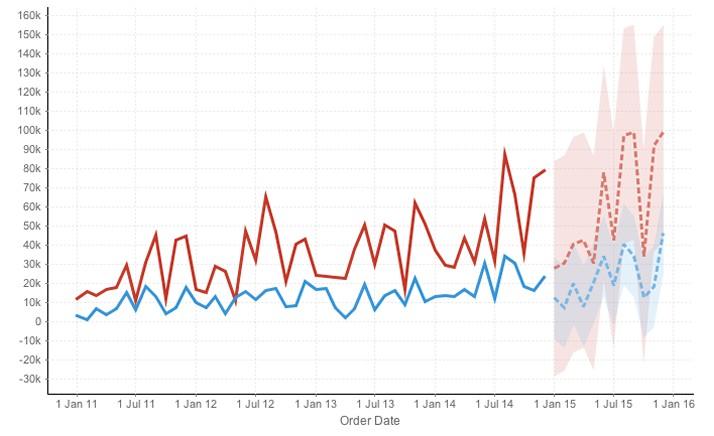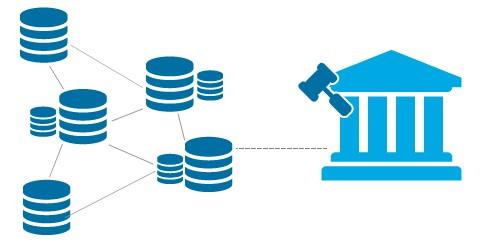8 Business Intelligence Trends to Embrace in 2016
By Yellowfin Director of Product Marketing, John Ryan
The Business intelligence (BI) industry has never been more exciting. In the last few years we have see game changing analytic use cases, new data sources, and more innovation than ever before.
The BI and analytics software market is forecast to grow from $17.9 billion in 2015 to over $26.7 billion in 2020 (according to MarketsandMarkets). And, as data and analytics becomes more integrated within our daily lives, the potential for growth seems almost unlimited.
So what innovations and trends do we forecast in 2016?

1. Insights become even more shareable
Let’s face it: Data is more valuable when shared. Insights locked away – hidden behind security permissions, hoarded on a desktop, guarded by senior management or camouflaged in a spreadsheet – have minimal impact. But, insights shared quickly throughout an organization can start movements and lead to positive change – and quickly, too.

In the last few years, many BI platforms have started adding Collaborative BI features to their offerings, including broadcasting, comments and annotations, as well as embedded BI. In 2016, we will see BI platforms embrace collaborative features, such as Facebook-like social Timelines, Trello-like Kanban boards, and PowerPoint-like Storyboards to facilitate data storytelling and vital decisions in meetings.
2. Traditional reporting, Data Discovery and embedded BI converge into a single BI platform
Ever wondered why large organizations own a dozen different BI and analytics tools? It’s because there’s a broad spectrum of BI use cases, and most vendors only focus on one little niche. For example, Data Discovery hasn’t killed traditional reporting – as much as some vendors and analysts want you to believe. It’s just a different BI use case.
2016 will be the year that organizations start consolidating their traditional reporting, Data Discovery, and embedded analytics capabilities into a single BI platform.

Think about it like this: Why would you keep buying multiple puzzles from different stores in order to complete the one picture? If you could purchase all the puzzle pieces necessary to complete that picture in one fell swoop, wouldn’t that simply make more sense?
3. Connecting to cloud data sources becomes easy
The number of data sources connected to analytics platforms is set to explode in 2016. Why? Because connecting to cloud-based data sources will become as easy as connecting to on-premise databases.

In fact, it’s likely that connecting to data sources in the cloud will become even easier as many analytics tools themselves move to the cloud – particularly if BI platforms also begin to bundle pre-built content for most cloud data sources.
Imagine connecting to your favorite online applications – Salesforce.com, Google Analytics, Marketo, LinkedIn, Github, or Xero – then, seconds later, exploring your data in best practice interactive dashboards.
4. Governed BI becomes fashionable (again)
Want to hear something scary?
Gartner has predicted that “through 2016, less than 10 percent of self-service BI initiatives will be governed sufficiently to prevent inconsistencies that adversely affect the business.” As such, 2016 will be the year organizations realize that circumventing IT for self-service Data Discovery can be detrimental.
At best, it leads to departmental data silos with conflicting or inconsistent definitions and calculations. At worst, you leave yourself vulnerable to security breaches and ugly data privacy repercussions. As a result, more organizations will shift from desktop-based departmental BI environments to cloud deployed platforms with governed self-service capabilities.

Embracing governance, and IT’s role in administering it, is the only way to deliver the pervasive self-service BI that information consumers crave. As counterintuitive as it might seem at first, the only way to offer end-user freedom – which allows BI-based insights to be independently unearthed and acted upon quickly by information consumers – is to give IT the security and governance framework needed to manage and maintain that fabled ‘single source of truth’.
5. The rise of analytical applications
As business moves to the cloud, organizations are realizing they can increase sales by giving customers valuable insights into usage history.

Starting in 2016, we predict a big rise in the number of organizations building their own analytical applications for customers and partners.
In fact, we predict that, in the next five years, analytical apps will become a component of every cloud service or embedded into every modern software application.
6. Facts tell, but stories sell
Did you know that, after a presentation, 63 percent of attendees remember stories and only five percent remember statistics (Source: Made to Stick by Chip & Dan Heath)? That’s why we’ll see the importance of storytelling within BI platforms grow in 2016.

Telling stories with data is more memorable, more personal, and a more impactful way of influencing your audience. If you really think about it, data analysis isn’t actually about data and charts. It’s about finding and telling a story.
7. Focus shifts from the analytic workflow to the business workflow
Not every business user wants self-service BI. In reality, many information consumers would simply rather that somebody else perform the data discovery and analysis for them. Next year will be remembered as the year BI platforms started shifting their focus from purely analytic workflows (connect, discover, share), and began involving the complete business workflow.

This shift in focus will see BI platforms introduce new features to empower BI consumers by enabling business users to quickly connect with the BI experts in their organization to create and manage tackable tasks, brainstorm ideas, and partake in collaborative review cycles to ensure the correct BI content and insights are delivered.

This shift will not only help business users and business analysts work together more effectively, efficiently and cohesively to deliver better insights and business outcomes, it will also make BI more accessible, valuable and actionable for everyone.
And, speaking of action…
8. Turning insight into action
Insight alone does not equal action. And, in 2016, BI platforms will finally start to become action-oriented. What do we mean? We mean that BI will become a platform for enablement – an environment in which business users can create and assign tasks for users, while other tasks can be triggered automatically when data reaches certain thresholds.
Forget trigger-based alerts. We’re talking about trigger-based action.

Living the dream of the data-driven organization won’t be far away in 2016.